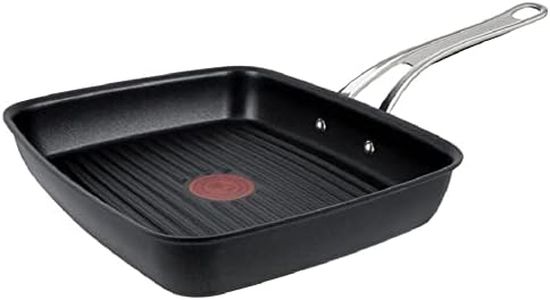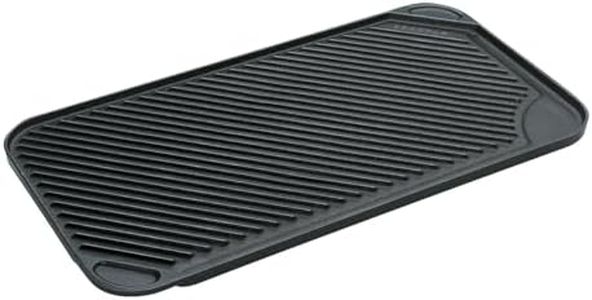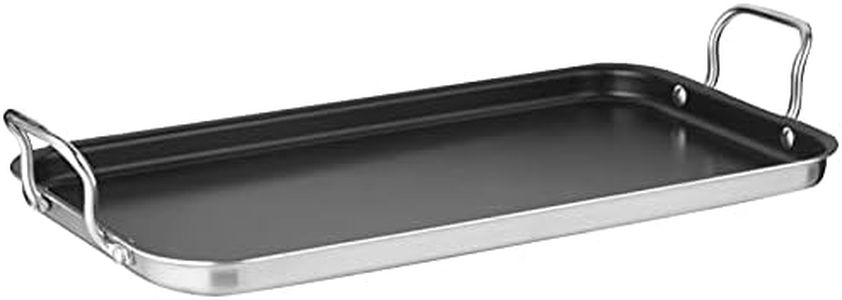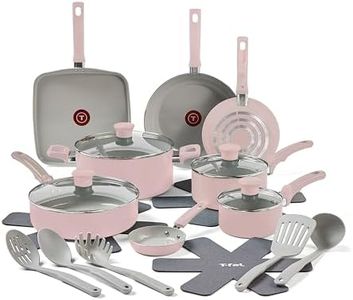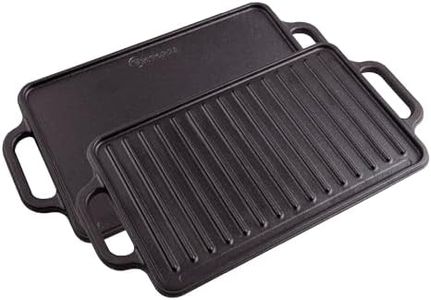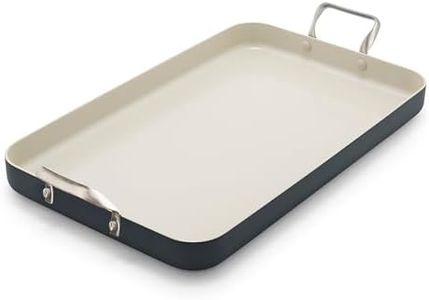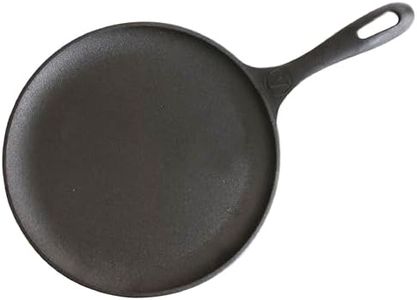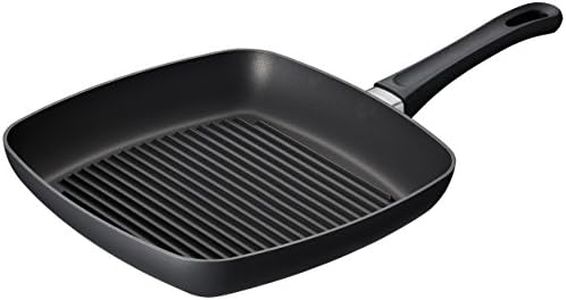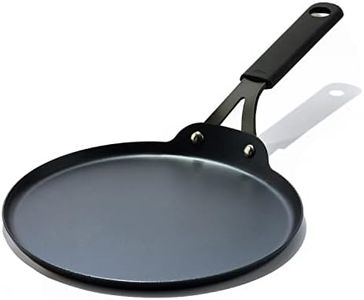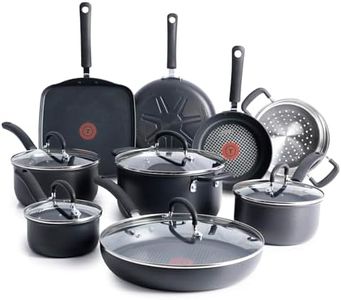We Use CookiesWe use cookies to enhance the security, performance,
functionality and for analytical and promotional activities. By continuing to browse this site you
are agreeing to our privacy policy
10 Best Griddle Pans
From leading brands and best sellers available on the web.Buying Guide for the Best Griddle Pans
Choosing a griddle pan is all about understanding your cooking needs and knowing which features will help you get the best results in the kitchen. Griddle pans are handy for grilling meats, vegetables, and even making pancakes indoors. It's important to consider different specs, as they affect how food cooks, the ease of cleaning, and how much you’ll enjoy using the pan overall.MaterialThe material of a griddle pan determines its heat conductivity, durability, weight, and how food interacts with the surface. The most common materials are cast iron, aluminum, stainless steel, and sometimes non-stick coated metals. Cast iron holds heat very well and gives great sear marks, but it's heavy and needs to be seasoned. Aluminum is lightweight and heats up quickly, but usually needs a coating for non-stick performance. Stainless steel is durable but can be harder to clean if food sticks. Non-stick surfaces are easiest to use and clean but may not last as long as bare metals. To pick what’s right for you, think about what you’re cooking, how much effort you want to put into care, and your comfort with handling heavier or lighter pans.
SizeGriddle pans come in different sizes, typically measured by diameter or side length. Small pans are around 8 inches, medium are about 10-11 inches, and large ones are 12 inches or more. Smaller pans are great if you’re cooking for one or two people and have limited storage. Medium pans strike a balance and are most versatile for average households. Large pans are ideal for families or if you like to cook bigger batches. The right size depends on how much food you usually prepare at once and the space available on your stovetop or in your cupboards.
Ridge Height and PatternThe ridges on a griddle pan are what create sear marks and let fat drain away from what you’re cooking. Some pans have deep, pronounced ridges, while others are shallower. Deep ridges give stronger grill marks and better fat drainage, but can be harder to clean. Shallower ridges are easier for beginners and make it simpler to flip foods, but they won't replicate an outdoor grill as much. Pick a ridge style based on how much emphasis you place on grilling marks versus cleaning convenience.
Handle Type and ComfortThe handle affects how easy and safe the pan is to use. Handles may be made from metal, plastic, or wood, and come in different shapes. Long handles stay cooler but might make the pan harder to store; short handles are more compact but can get hot. Some also have helper handles for two-handed carrying, especially on heavier pans. If you have grip issues or cook for a long time, a comfortable, ergonomic handle is important. For heavy pans, helper handles make moving the pan much safer.
Oven CompatibilityNot all griddle pans can be used in the oven, but some are designed to go straight from stovetop to oven. Oven compatibility depends on what the pan and handle are made of. Metal handles allow for oven use, but plastic or wood handles usually limit this. If you want to finish dishes in the oven, choose a pan that’s specified as oven safe. Think about your usual cooking methods to decide if this feature is a must for you.
Ease of CleaningGriddle pans can be tricky to clean, especially with deep ridges where residue can stick. Some pans are dishwasher safe, while others (like cast iron) should only be hand washed. Non-stick coatings help with easy cleaning, but require gentle care to avoid scratching. Consider how much time you’re willing to spend on cleanup and whether you prefer hand washing or the convenience of a dishwasher.

